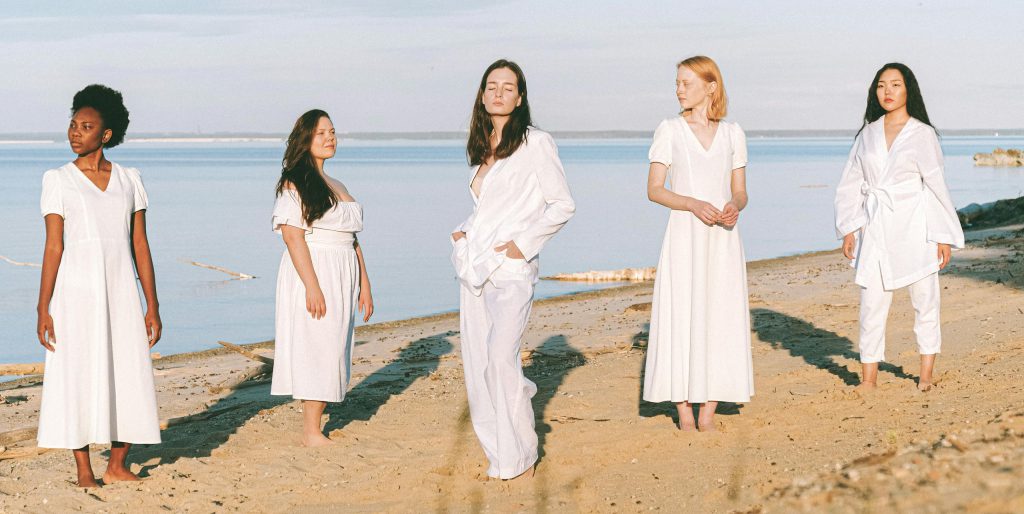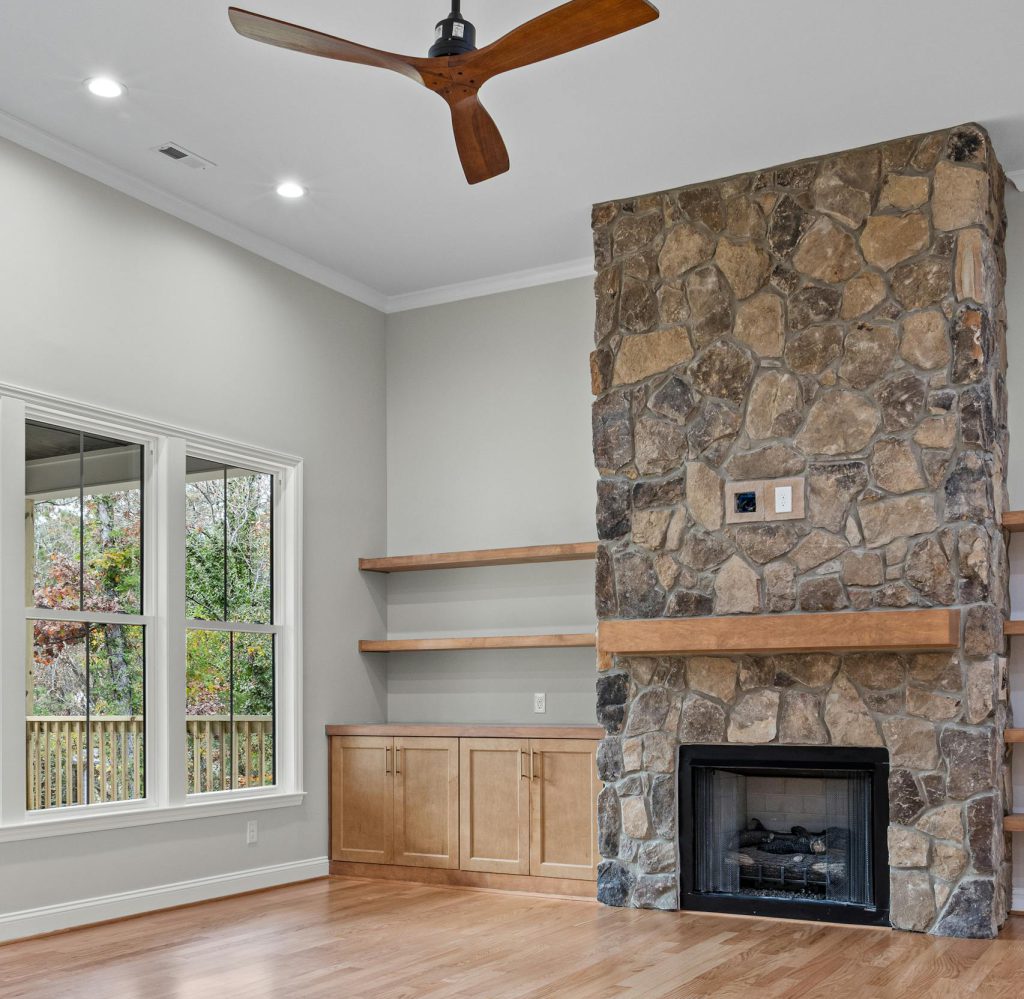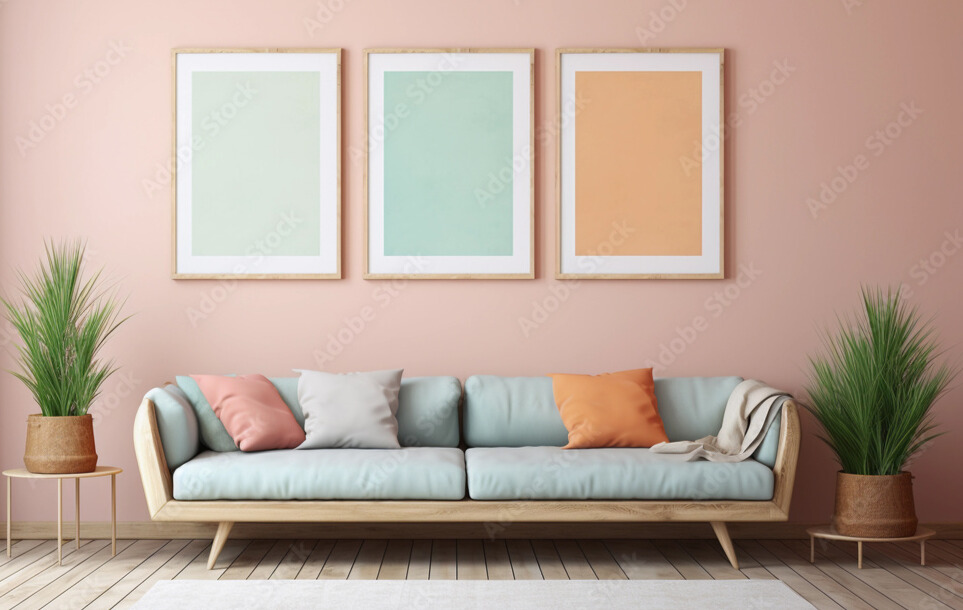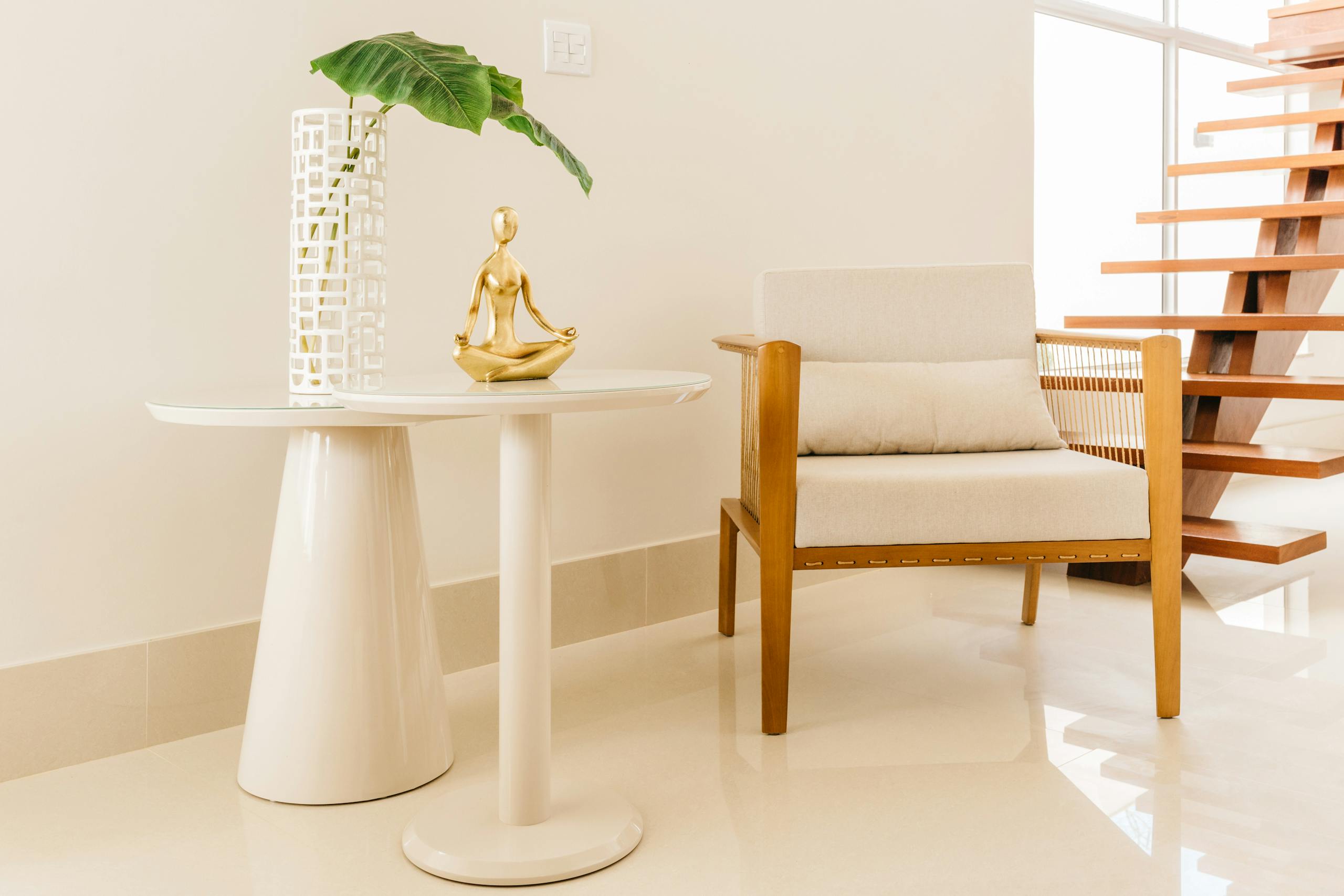Your home is more than just a place to live:
It’s a canvas for self-expression, a reflection of your unique personality and style.
Ethelier.com
But how can you infuse your individuality into your living space, creating a home that truly feels like an extension of yourself?
In this comprehensive guide, we’ll explore the art of expressing your personality through home decor. From discovering your personal style to selecting:
- colors,
- furniture,
- accessories,
- and more.
By the end of this article, you’ll have the tools and inspiration you need to create a space that authentically represents who you are and makes you feel happy, comfortable, and truly at home.
Discovering Your Personal Style
Before you start decorating, I always recommend that you understand the various factors that influence your personal style. By identifying these elements, you can create a home that truly reflects your unique personality.

Think about the following:
Personal Factors
- Your age and life stage: Your decor preferences may change as you move through different phases of life, from your early 20s to your retirement years.
- Your gender identity and expression: The way you express your gender can influence your choice of colors, patterns, and decor elements.
- Your socioeconomic status and education level: Your financial means and educational background can shape your taste in decor and your access to certain design resources.
- Your geographical location: The place you call home, whether it’s a bustling city or a quiet rural town, can impact your decor choices based on local culture, climate, and available resources.
- Your personality traits: Are you an introvert or an extrovert? Do you prefer minimalism or maximalism? Your personality traits can guide your decor decisions.
- Your emotional associations and memories: Certain colors, textures, or objects may evoke specific emotions or memories that influence your decor preferences.
- Your psychological factors: Your desire for comfort, need for self-expression, and other psychological factors can shape your decor choices.
- Your sensory preferences: Some people are more drawn to certain textures, scents, or sounds, which can be incorporated into their decor choices.
- Your minimalist or maximalist tendencies: Your preference for a simple, clutter-free space or a more abundant, eclectic look can guide your decor decisions.
- Your personal experiences: Your background, upbringing, travels, exposure to different cultures, childhood experiences, and nostalgia can all shape your unique style.
- Your collected experiences from previous homes or living spaces: The decor elements you’ve loved or disliked in past homes can inform your current preferences.
Cultural and Social Influences
- Your cultural heritage and traditions: Your cultural background may influence your choice of colors, patterns, and decor elements that hold symbolic meaning or significance.
- Your religious or spiritual affiliations: Your faith or spiritual practices may guide your decor choices, such as incorporating religious symbols or creating a dedicated space for meditation or prayer.
- Your generational influences: The design trends and styles popular during your formative years can have a lasting impact on your personal taste.
- Your professional environment: Your work setting and industry can influence your decor preferences, whether it’s a desire to create a home office that reflects your professional style or to create a space that contrasts with your work environment.
- Your peer influences and social circles: The decor styles and trends favored by your friends and social groups can shape your own preferences.
- Your family dynamics and living situation: Your family size, ages, and lifestyles can impact your decor choices, such as creating kid-friendly spaces or accommodating a multigenerational household.
- The influence of significant others or family members: The decor preferences of your partner, roommates, or family members may need to be considered and incorporated into your own style.
- The media and trends you follow: Your exposure to design magazines, TV shows, social media influencers, and current trends can inspire and inform your personal style.
- Your aspirational lifestyle goals: Your decor choices may reflect the lifestyle you aspire to, such as creating a space that supports your health and wellness goals or reflects your dream travel destinations.
Aesthetic and Design Preferences
- Your aesthetic preferences: Your favorite colors, patterns, and textures can greatly influence your decor choices and help create a space that feels visually appealing to you.
- Color psychology and personal associations: Certain colors may evoke specific emotions or hold personal meaning, which can guide your decor decisions.
- Your artistic inclinations: Your love for certain art styles, mediums, or artistic movements can be reflected in your decor, such as incorporating sculptural elements or bold, abstract patterns.
- Feng Shui or other spatial arrangement philosophies: Your belief in or appreciation for certain design philosophies, such as Feng Shui, can influence how you arrange and decorate your space.
- Appreciation for craftsmanship and artisanal goods: Your admiration for handcrafted or artisanal items can lead you to incorporate unique, high-quality pieces into your decor.
- Historical periods of interest: Your fascination with certain historical eras, such as mid-century modern or Victorian, can inspire your decor style and the pieces you choose to include in your home.
- Architectural style of your home: The existing architectural elements and style of your home, such as a craftsman bungalow or a sleek, modern apartment, can provide a starting point for your decor choices.
Lifestyle and Practical Considerations
- Your lifestyle and daily routines: Consider how you use each space in your home and tailor your decor to support your daily activities and routines.
- Your hobbies and interests: Incorporate elements that reflect your passions, such as displaying your collection of vintage cameras or creating a cozy reading nook.
- Pet ownership and accommodations: If you have pets, choose decor that is durable, easy to clean, and safe for your furry friends.
- Health considerations: Consider any allergies, mobility issues, or other health concerns that may impact your decor choices, such as opting for hypoallergenic fabrics or ensuring ample space for movement.
Values and Beliefs
- Environmental consciousness and sustainability: If you value eco-friendliness, choose decor made from sustainable, recycled, or upcycled materials and incorporate energy-efficient solutions.
- Personal values and beliefs: Your decor can reflect your personal values, such as showcasing your commitment to social justice or your love for nature.
- Political ideologies: While not always overt, your political beliefs may influence your decor choices, such as supporting local artisans or choosing pieces with symbolic meaning.
- Desire for uniqueness or conformity: Your preference for standing out or blending in can guide your decor decisions, whether it’s choosing bold statement pieces or opting for more understated, timeless designs.
External Factors
- Seasonal preferences and holiday traditions: Your decor may change with the seasons or incorporate elements that reflect your favorite holidays and traditions.
- Climate considerations: Your local climate can influence your decor choices, such as opting for lighter fabrics in warm weather or incorporating cozy textures in colder climates.
Discovering your personal style can feel overwhelming with so many factors to consider, I know.
As an interior designer with years of experience helping clients create homes that reflect their unique personalities, I’ve found that the key is to focus on the elements that resonate most with you and your lifestyle.
Start by asking yourself a few simple questions:
- What colors, patterns, and textures make you feel happy and comfortable?
- What activities and hobbies do you enjoy, and how can your decor support them?
- What are your most cherished memories, and how can you incorporate elements that evoke those positive emotions?
For example, one of my clients, Sára, had a deep love for her grandmother’s vintage tea set. We used the delicate floral pattern as inspiration for her living room decor, incorporating soft pastels and botanical prints that reminded her of cherished childhood memories.
Another client, Michael, was an avid traveler who wanted to bring a sense of adventure into his home. We created a gallery wall in his study as the focal point, featuring photos and mementos from his trips, and incorporated global-inspired textiles and decor elements that reflected his passion for exploring new cultures.
And just one more interesting story, one of my other clients initially felt pressure to conform to a sleek, minimalist aesthetic that was popular among her friends. However, she found herself drawn to the warmth and charm of vintage pieces. By incorporating a few carefully chosen antiques alongside more modern elements, we created a space that felt authentic to her eclectic taste.
And no matter which route you go, it’s best to prioritize function and comfort.
For example, if you have young children or pets, opt for durable, easy-to-clean fabrics and surfaces. Or if you work from home post-covid, create a dedicated workspace that inspires productivity and reflects your professional style.
Elements of Decor That Reflect Personality
Now that you’ve identified the factors that influence your personal style, it’s time to explore the various elements of decor that can help you express your unique personality in your home.
Color Palette
I believe that color is one of the most powerful tools for creating a space that reflects your personality. The colors you choose in your home can evoke specific emotions and set the overall tone for your home. I recommend starting by identifying the colors that make you feel happy, calm, or energized, and using those as the foundation for your decor.

For example, if you’re drawn to bold, vibrant hues, consider incorporating statement pieces in your favorite colors, such as a bright red sofa or a striking blue accent wall. If you prefer a more soothing, understated palette, opt for soft neutrals and subtle pops of color in your accessories.
Furniture Selection
Your furniture choices can also speak volumes about your personal style. I think it’s essential to select pieces that not only reflect your aesthetic preferences but also support your lifestyle and daily routines.
- If you love to entertain, for example, consider investing in a large, comfortable sectional sofa or a dining table that can accommodate gatherings of family and friends.
- If you’re a bookworm, create a cozy reading nook with a plush armchair and ample shelving for your favorite novels.
Accessories and Accents
In my experience, accessories and accents are the key to infusing your personality into your decor. These smaller items, such as throw pillows, artwork, and decorative objects, allow you to showcase your interests, experiences, and passions.
- I recommend displaying items that hold personal meaning, such as family photos, travel souvenirs, or handmade crafts.
- Create vignettes and gallery walls that tell your story and spark conversation with guests.
- If you have a green thumb (and don’t forget to water your plants like me), incorporate plants and natural elements into your decor. Not only do they add visual interest and texture, but they also reflect your love for nature and bring a sense of life to your space.
Textiles and Textures
Layering different textiles and textures is another way to add depth and personality to your decor. I think it’s important to choose fabrics that not only appeal to your visual preferences but also create a sense of comfort and coziness.
- If you love the feel of soft, plush textures, incorporate elements like velvet throw pillows, a chunky knit blanket, or a fluffy area rug.
- If you prefer a more streamlined, modern look, opt for sleek, smooth surfaces and minimalist textiles.
- Don’t be afraid to mix and match patterns, too. I often encourage my clients to combine different prints, such as stripes, florals, and geometrics, to create a layered, visually interesting look that reflects their unique style.
By thoughtfully incorporating these various elements of decor, you can create a home that not only looks beautiful but also feels like a true reflection of your personality and lifestyle.
Tying It All Together
Once you’ve identified the elements that reflect your personal style, it’s important to create a cohesive look that ties everything together.
I believe that the key to achieving this is by finding a balance between your unique self-expression and overall aesthetic harmony.
1. Identify Focal Points
Choose statement pieces that reflect your personality, such as a striking piece of artwork, a bold accent wall, or a unique furniture item.
Use these focal points as a starting point for the rest of your decor choices, such as color palette and complementary elements.

2. Consider Flow and Functionality
When designing a space, it’s crucial to consider the natural flow of movement and how people will navigate through it. Here are some tips to optimize flow and functionality:
- Create clear pathways: Ensure that there are clear, unobstructed pathways between key areas of the room, such as from the entrance to seating areas or from the bed to the closet. Avoid placing furniture or decor items in a way that hinders easy movement.
- Define zones: Divide larger spaces into distinct zones for specific activities, such as conversation areas, reading nooks, or workspaces. Use furniture placement, area rugs, or lighting to visually separate these zones while maintaining an overall cohesive look.
- Consider traffic patterns: Think about how people will naturally move through the space and arrange furniture accordingly. For example, in a living room, create a clear path from the entrance to the seating area, and ensure that there’s enough space around the coffee table for people to comfortably walk by.
- Prioritize functionality: Choose furniture and decor items that not only look great but also serve a practical purpose. For instance, opt for a storage ottoman instead of a regular coffee table, or select a dining table with built-in leaves to accommodate larger gatherings when needed[5].
- Optimize furniture placement: Arrange furniture in a way that promotes conversation, comfort, and functionality. For example, in a living room, position sofas and chairs to face each other, creating an inviting space for socializing. In a bedroom, ensure that there’s enough clearance around the bed for easy access and movement.
3. Apply the “Rule of Three” in Decor
The “rule of three” is a design principle that suggests arranging items in odd numbers, particularly in threes, to create a more appealing, memorable, and balanced look (Ideal Home).

Here are some ways to incorporate this rule in your decor:
- Grouping accessories: Arrange decorative objects, such as vases, candles, or sculptures, in groups of three on shelves, coffee tables, or mantels. Vary the heights, textures, and colors of the items to create visual interest.
- Styling with pillows: When arranging throw pillows on sofas or beds, use odd numbers for a more balanced and visually appealing look. For example, place three pillows on a sofa, with two matching pillows on the ends and a contrasting pillow in the center.
- Creating a gallery wall: When hanging artwork, consider arranging pieces in odd numbers to create a more dynamic and engaging display. For instance, hang three large pieces in a row, or create a gallery wall with five or seven smaller pieces in varying sizes and frames.
- Lighting fixtures: When selecting pendant lights or chandeliers, opt for odd numbers to create a balanced and visually interesting look. For example, hang three pendant lights in a row over a kitchen island or dining table.
- Furniture groupings: Arrange furniture in odd numbers to create a more inviting and conversational space. For instance, place two armchairs and a sofa around a coffee table, or group three accent chairs in a reading nook.
By applying the “rule of three” throughout your home, you can create a sense of balance, visual interest, and cohesion in your decor.
4. Flexibility and Evolution
- Allow your style to evolve over time as your tastes, experiences, and lifestyle change.
- Don’t be afraid to update your decor accordingly, gradually incorporating elements that reflect your new interests or life stages.
5. Create a Space That Makes You Feel Good
- Remember that your home should be a reflection of your unique personality and a space that makes you feel happy, comfortable, and inspired.
- By tying together the various elements of your decor in a cohesive and meaningful way, you can create a home that truly feels like an extension of yourself.
As an example of all of this, I once worked with a client who had recently retired and was ready to transform her home to reflect her new lifestyle. We:
- Gradually incorporated elements that reflected her love for gardening, such as botanical prints and indoor plants.
- Created a cozy reading nook where she could relax and enjoy her newfound leisure time.
- Updated her color palette to include soothing, natural hues that promoted a sense of tranquility and relaxation.
By following these steps and embracing her evolving style, my client was able to create a home that not only reflected her personality but also supported her new lifestyle and brought her joy and comfort.
